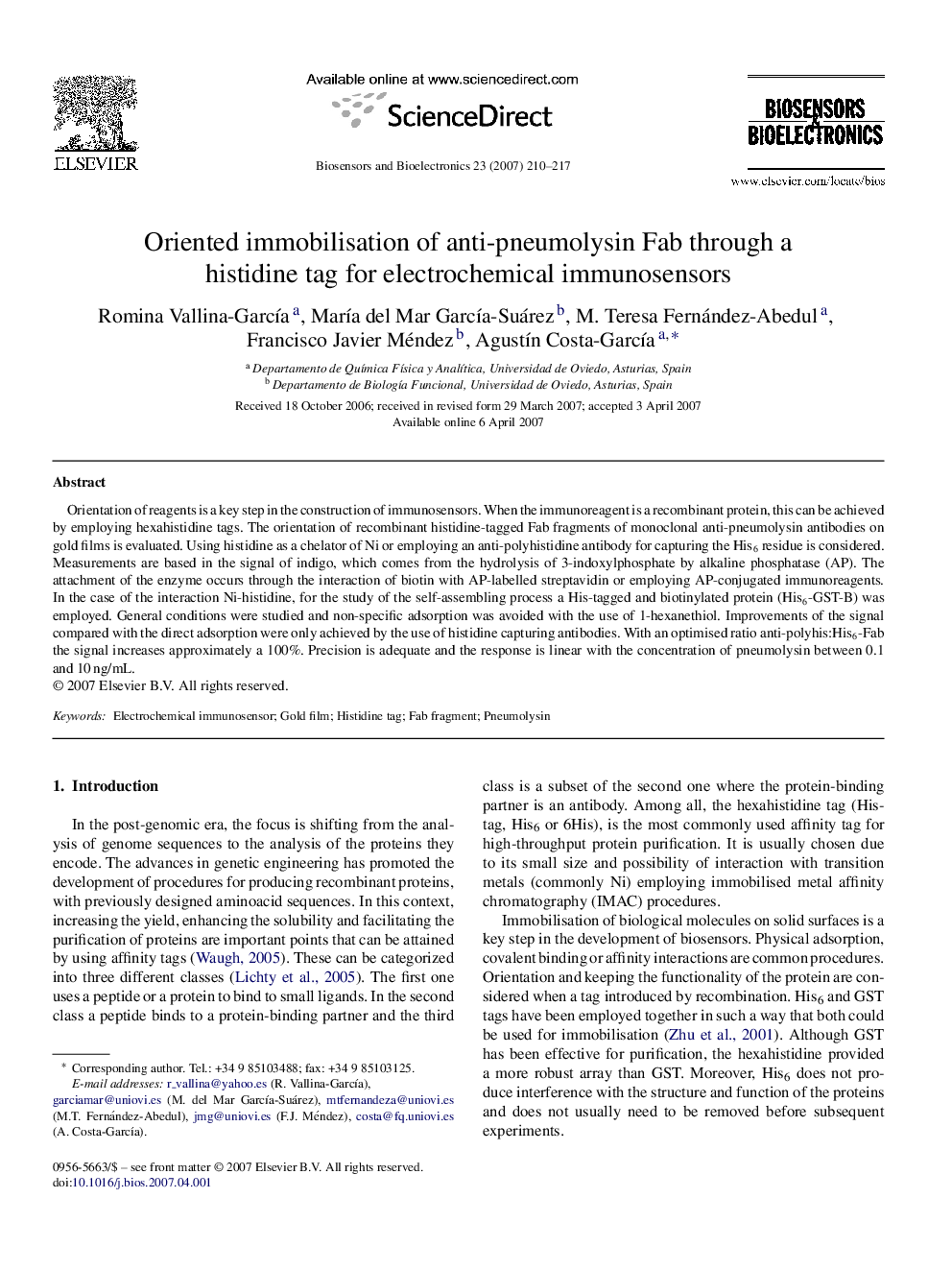| Article ID | Journal | Published Year | Pages | File Type |
|---|---|---|---|---|
| 870110 | Biosensors and Bioelectronics | 2007 | 8 Pages |
Orientation of reagents is a key step in the construction of immunosensors. When the immunoreagent is a recombinant protein, this can be achieved by employing hexahistidine tags. The orientation of recombinant histidine-tagged Fab fragments of monoclonal anti-pneumolysin antibodies on gold films is evaluated. Using histidine as a chelator of Ni or employing an anti-polyhistidine antibody for capturing the His6 residue is considered. Measurements are based in the signal of indigo, which comes from the hydrolysis of 3-indoxylphosphate by alkaline phosphatase (AP). The attachment of the enzyme occurs through the interaction of biotin with AP-labelled streptavidin or employing AP-conjugated immunoreagents. In the case of the interaction Ni-histidine, for the study of the self-assembling process a His-tagged and biotinylated protein (His6-GST-B) was employed. General conditions were studied and non-specific adsorption was avoided with the use of 1-hexanethiol. Improvements of the signal compared with the direct adsorption were only achieved by the use of histidine capturing antibodies. With an optimised ratio anti-polyhis:His6-Fab the signal increases approximately a 100%. Precision is adequate and the response is linear with the concentration of pneumolysin between 0.1 and 10 ng/mL.
